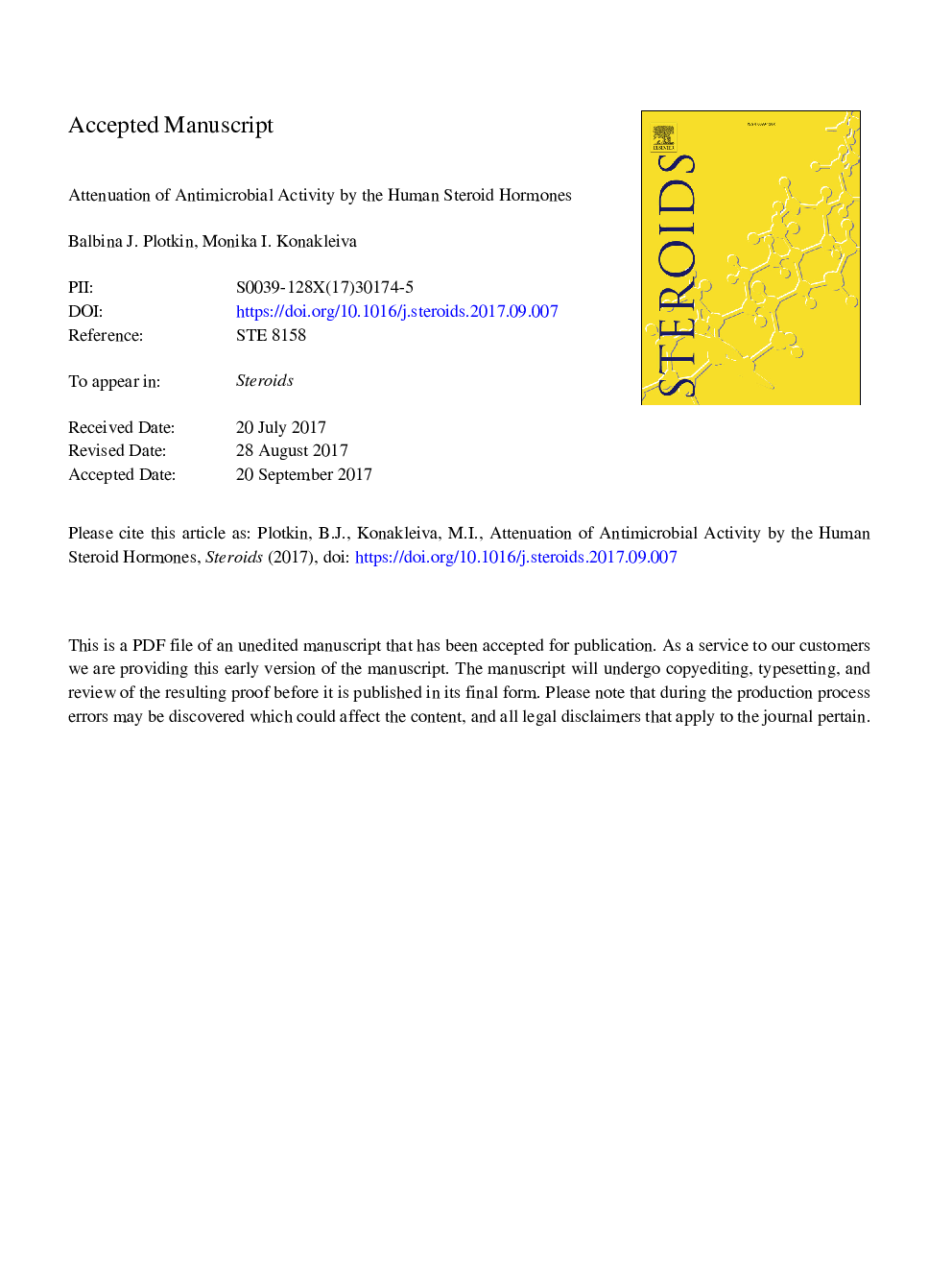| Article ID | Journal | Published Year | Pages | File Type |
|---|---|---|---|---|
| 8366653 | Steroids | 2017 | 32 Pages |
Abstract
Upon entering the human host, Staphylococcus aureus is exposed to endogenous steroid hormones. The interaction between S. aureus and dehydroepiandosterone (DHEA) results in an increased resistance to the host cationic defense peptide, β-1 defensin, as well as vancomycin and other antibiotics that have a positive charge. The increased resistance to vancomycin is phenotypic and appears to correlate with a DHEA-mediated alteration in cell surface architecture. DHEA-mediated cell surface changes include alterations in: cell surface charge, surface hydrophobicity, capsule production, and carotenoid production. In addition, exposure to DHEA results in decreased resistance to lysis by Triton X-100 and lysozyme, indicating activation of murien hydrolase activity. We propose that DHEA is an interspecies quorum-like signal that triggers innate phenotypic host survival strategies in S. aureus that include increased carotenoid production and increased vancomycin resistance. Furthermore, this DHEA-mediated survival system may share the cholesterol-squalene pathway shown to be statin sensitive thus, providing a potential pathway for drug targeting.
Keywords
Related Topics
Life Sciences
Biochemistry, Genetics and Molecular Biology
Biochemistry
Authors
Balbina J. Plotkin, Monika I. Konakieva,
